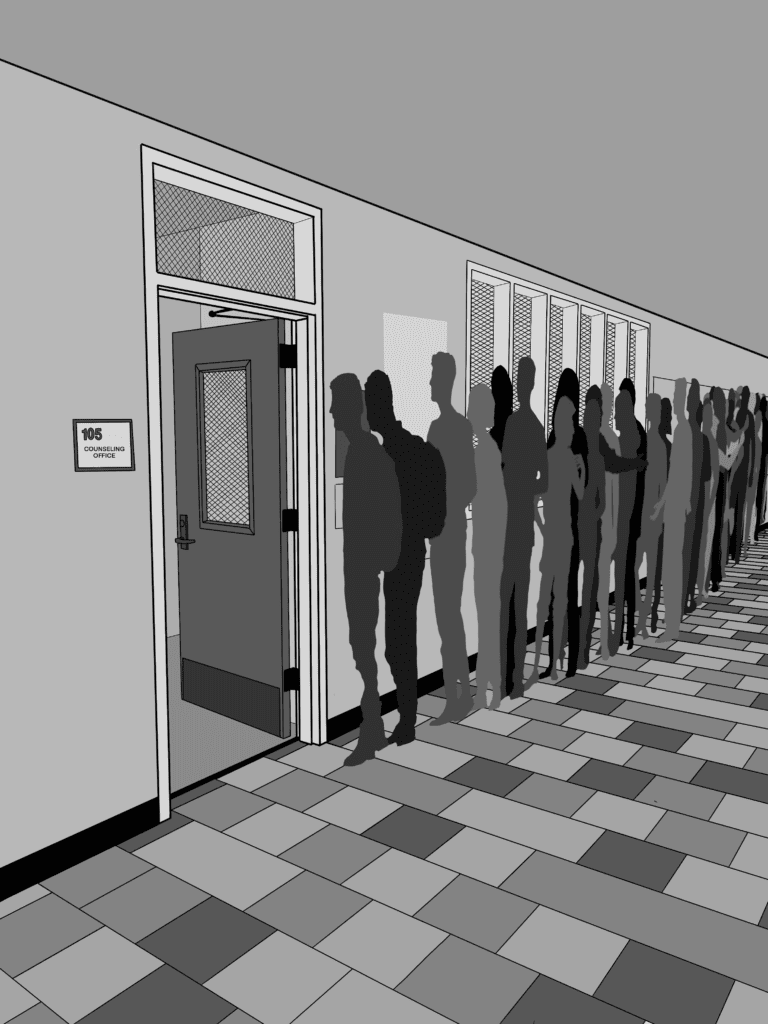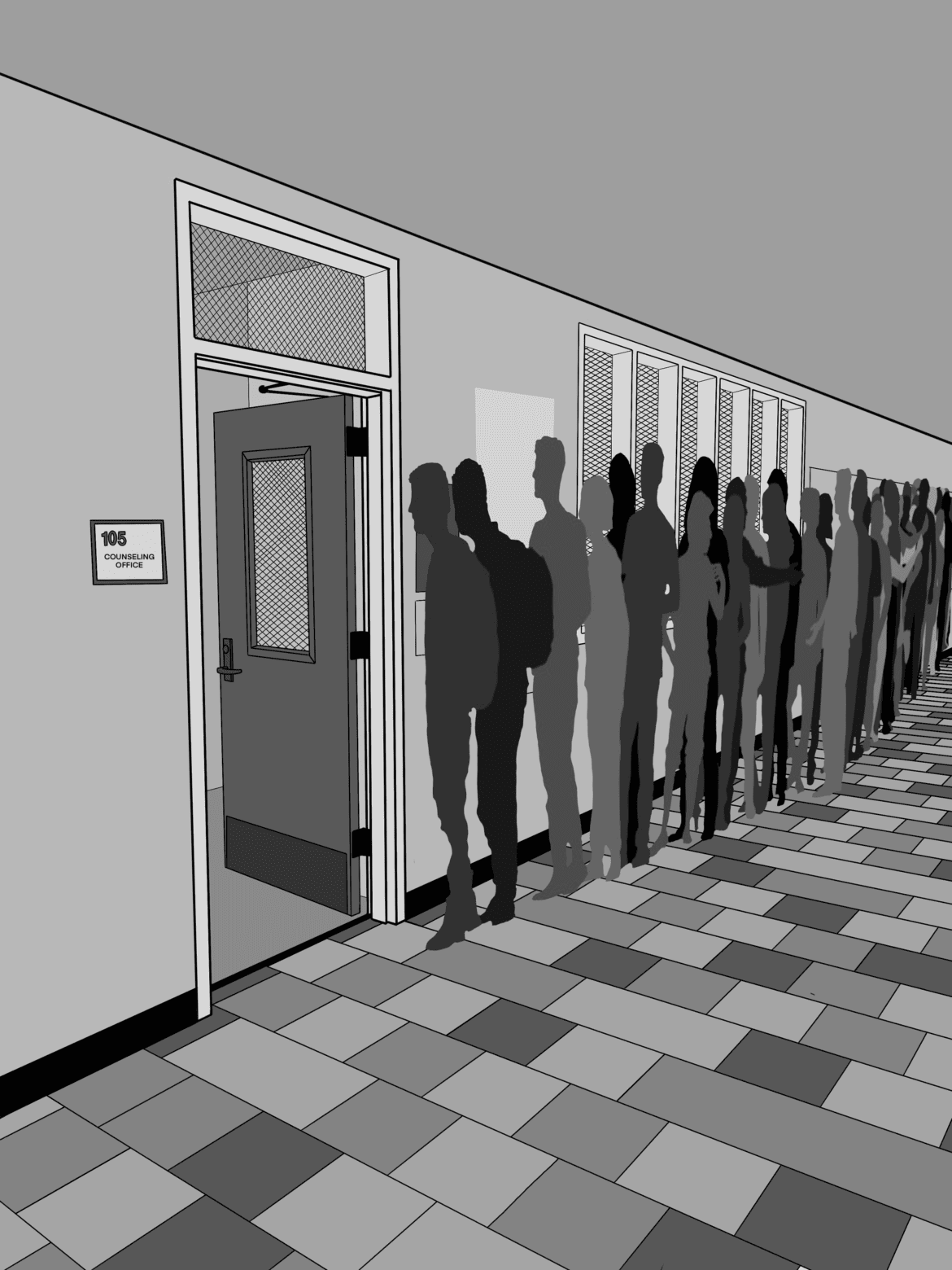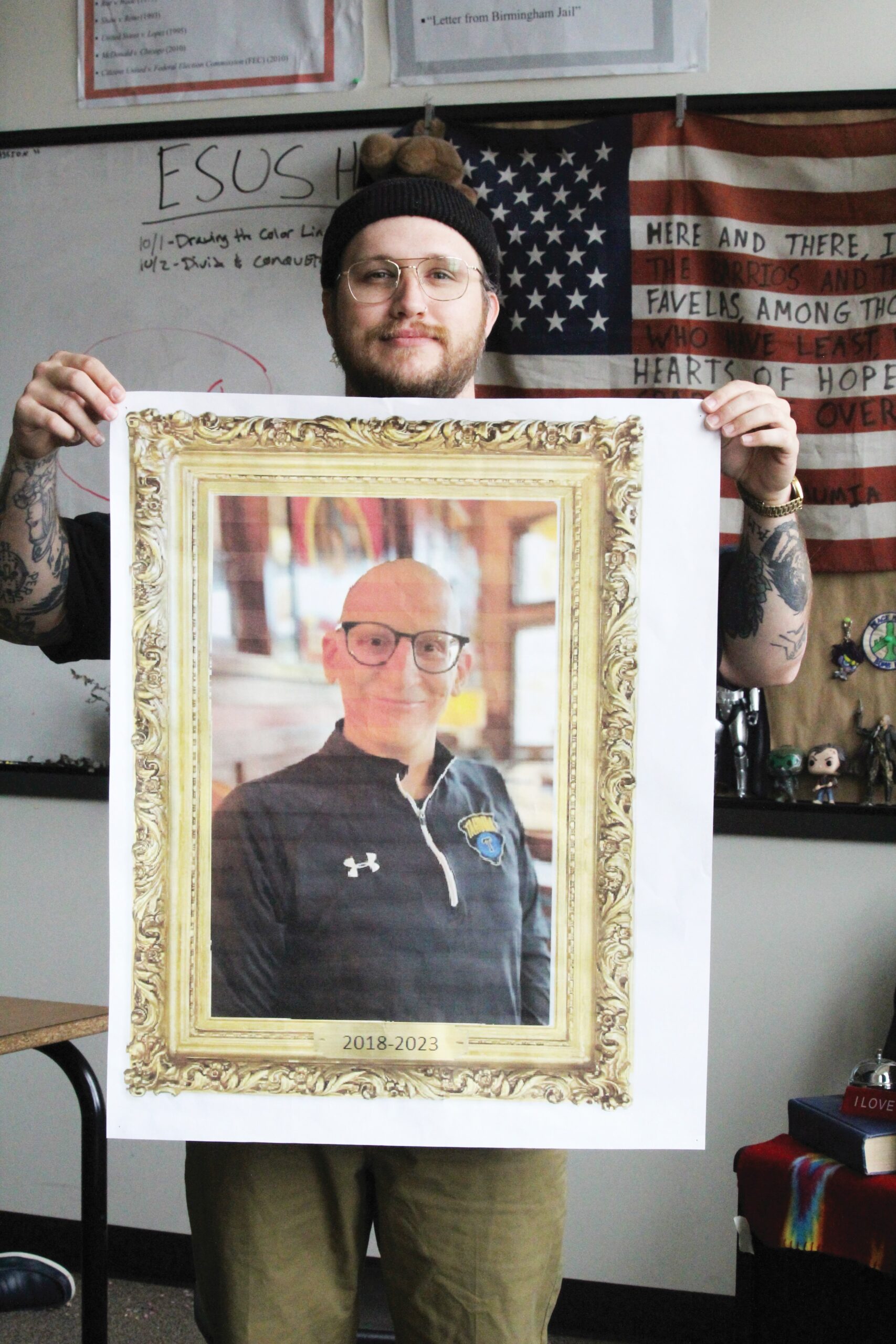
Last year, Roosevelt had five counselors, but for the 2021 school year, that number dropped to four. The results: overcrowded classrooms, delayed counselor response times, and an overall reduction in student counseling quality.
This decrease of school counselors is not a Roosevelt issue, but rather a national trend. The list of things counselors are accountable for is extensive, which raises the question, why are schools losing them, rather than hiring more?
The American School Counselor Association recommends a student to counselor ratio of 250 to 1, which stands starkly against Roosevelt’s current ratio at 400 to one, an increase from the 2019-2020 ratio ranging in the mid 300’s. The increase of approximately 50 to 60 students per counselor this year impacts the level of quality students receive.
Counselor Carrie Richard, Co-Head of the Counseling Department, states, “It’s amazing how only 20 or 30 students on your caseload makes a huge difference and how much harder it is to manage everything.” She discusses her concern over not replying to students and families as frequently, “I’ve prided myself my whole career on being able to keep up with email and this year I’m behind in emails and it’s a horrible feeling, to not be able to get back to people as quickly as we would want.”
This trend can be seen nationally. The national average ratio is consistently above 400, and without a foreseeable decrease.
A national 2016 survey asked where public school funds should go. The majority response was for teachers, supplies, classes and extracurriculars, while school counselors ranked last at only six percent of responses.
The unbalanced student to counselors ratio at Roosevelt has left counselors struggling to keep up with their responsibilities mandated by the state, district, and building, while maintaining connections with students.
Frank Heffernan, another Roosevelt counselor, shares this experience, “How can you possibly even see, interact with 430 students in a meaningful way in the course of the year?” He continues, “There really isn’t a way to do it right. And so that’s unfortunate.”
Counselors are struggling to figure out which tasks to prioritize. As Counselor Courtney Judkins says, “It’s just hard to gear on which one to tackle first, which student to reach out to first, then it’s always hard because you have the fear of things falling through the cracks.”
Students, too, feel the effects of the sudden increase of counselor caseloads. Sophomore Elise Cottington talked about how they struggled to find a time to meet with their counselor, and even when they did meet, it was rushed and short.
This year is not only hard due to the loss of a counselor, but also because of the return of in-person school and the pandemic. Heffernan says, “Students are dealing with a lot of difficult issues right now. Trying to figure out how to be a student again, how to catch up emotionally from a year and a half of COVID [and have] had to figure out how to get along again with their peers.”
So why the decrease in counselors? There are two factors at play. The first relates to Roosevelt’s decision-making and distribution process in terms of funding, the second is inaccurate enrollment projections.
The district funds counselors based on a student’s time spent in school, or full-time equivalent (FTE) students, rather than headcount. For example, a Running Start student spending part of the day at Roosevelt would not be considered an FTE student, but they are a whole headcount.
This said, counselors have to attend to each student headcount regardless of their FTE status. By hiring counselors based on FTE students, counselors are assigned more headcount students than the recommended ratio.
To address this problem, the district provides additional funding to the school based on the number of Running Start students in attendance. While these funds are intended to support Running Start, Roosevelt decision-makers have the discretion to reallocate these funds to other school activities.
Last school year, the district funded four counselors for Roosevelt. The Budget Committee of the Building Leadership Team (BLT) recommended additional funding for 40% of a counselor position using the Running Start funds, and an additional 20% from general discretionary building funds. This allowed the school to hire a part-time counselor. The total funding for 4.6 counselor positions was approved by the BLT, then by a two-thirds vote of the RHS staff.
For the 2021-22 school year, RHS again started with a 4.0 counselor allocation from the district, and available Running Start funds equivalent to 40% of the cost of a counselor. However, Roosevelt also anticipated losing up to 7.9 classroom teachers due to decreased enrollment projections and less reserve funding within the building.
The Budget Committee recommended again funding a 0.6 counseling position, using the Running Start and additional discretionary funds. However, instead of hiring a part-time counselor, BLT decided to direct those funds toward teacher positions. This was approved by a two-thirds vote of the RHS staff.
As a result of this reduction in funding, Roosevelt lost its 5th part-time counselor. In addition, another counselor left the department based on an unrelated personal decision. This led to an open position, which was filled by Roosevelt’s new counselor, Judkins.
Because counselors are hired based on FTE students, counselors are left with an unbalanced ratio. Richard says, “You’re told you can only do what you can do and you have to prioritize but […] everything is a priority. And you can’t get to it. It’s like how do you choose which name is more important when they’re all important? So it’s hard to figure out how to do that.”
According to The Atlantic, nonprofit organizations such as College Possible and the College Advising Corps are working to supplement the college and career planning portion of counselors’ responsibilities by reaching out to more students and making college more accessible. However, this can only do so much, and counselors are left to deal with many other tasks.
Overall, Judkins, Heffernan, and Richard are asking for more support and specialty staff who can specialize in certain aspects of students’ school lives. That way, counselors can focus more on one-on-one interactions with their students.
Specialty staff include designated officers to handle 504 plans and mental health support for students. This year, Roosevelt also lost an Academic Intervention Specialist (AIS), and the current and only AIS works two periods as a Physical Education teacher.
Moreover, 504 plans, which are meant to accommodate students and meet their needs, are a large portion of counselor responsibilities. Both Heffernan and Richard discussed the possibility of specialized 504 officers being sent from the district’s 504 department, however this has not yet materialized.
From a student’s perspective, Cottington recommends more designated opportunities for students to reach out to counselors during school, “Maybe a slightly longer breakfast break so that people can actually check in with the counselor and do things to correct things.”
This unbalanced ratio of counselors to students threatens the quality of support students receive from counselors. Moving forward, additional specialty staff and necessary funds needed to help alleviate counselors’ workload can be provided to close this gap between students and counselors.
Judkins reflects, “I’m just hoping that we can come to a solution where we could kind of balance the workload of us as counselors, especially since this year is still not a completely normal year.”



